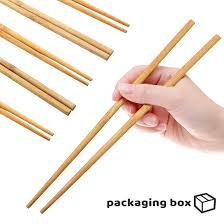Chopsticks are more than just utensils; they are a profound part of East Asian culture, history, and daily life. These slender tools have been used for over three millennia, originating in China and spreading across Asia. Today, they are integral to dining experiences in countries Chopsticks like Japan, Korea, Vietnam, and beyond.
Table of Contents
The Origins and Evolution of Chopsticks
The history of chopsticks dates back to the Shang dynasty in China (1766–1122 BC), where they were initially used for cooking. Archaeological findings, such as bronze chopsticks from the ruins of Yin near Anyang, provide evidence of their early use. Over time, chopsticks evolved from cooking tools to primary eating utensils, influenced by Confucian ideals that emphasized harmony and simplicity.
Materials and Designs of Chopsticks
Traditionally, chopsticks were crafted from materials like wood, bamboo, ivory, and ceramics. In modern times, they are also made from plastic, stainless steel, and even titanium. The design varies by region:
- China: Typically longer and thicker, with blunt or tapered tips.
- Japan: Shorter, often lacquered, and sometimes adorned with decorative elements.
- Korea: Made of metal, usually stainless steel, and often flat in shape.
Each design reflects the unique cultural aesthetics and dining practices of the respective country.
Chopstick Etiquette Across Cultures
Proper use of chopsticks is essential in many Asian cultures, with specific etiquette to follow:
- China: It is customary to lift the rice bowl to the mouth and use chopsticks to push rice into the mouth. Tapping chopsticks on the bowl is considered impolite, as it mimics the actions of beggars.
- Japan: Refrain from sticking chopsticks upright into a bowl of rice, as this resembles funeral rituals. Also, avoid passing food directly from one set of chopsticks to another, as this mirrors the bone-passing ritual during cremation ceremonies.
- Korea: Chopsticks are used in conjunction with a spoon (sujeo). It is considered disrespectful to use chopsticks to pick up soup or rice; the spoon should be used instead.
Understanding and respecting these etiquettes ensures a harmonious dining experience and honors cultural traditions.
The Role of Chopsticks in Daily Life
In many Asian households, chopsticks are used daily, not just for eating but also for cooking and serving food. They are often seen as extensions of the hand, facilitating a deeper connection with the food. The act of using chopsticks can be meditative, requiring focus and coordination, which enhances the dining experience.
Chopsticks in Modern Times
With globalization, the use of chopsticks has spread worldwide. In many Western countries, they are commonly associated with Chinese and Japanese cuisine. However, the traditional use of chopsticks is still prevalent in Asia, where they are cherished for their cultural significance and practicality.
In recent years, there has been a growing movement towards sustainable dining practices. Companies are now producing reusable chopsticks made from eco-friendly materials, encouraging people to reduce their reliance on disposable utensils.
Also read Medusa Piercing A Comprehensive Guide to the Philtrum Piercing
Conclusion
Chopsticks are not merely tools for eating; they are symbols of cultural heritage, respect, and tradition. Their enduring presence in Asian societies highlights their importance beyond the dining table. By understanding the history, design, etiquette, and significance of chopsticks, we gain a deeper appreciation for the cultures that have embraced them for centuries.
Note: The information provided is based on historical and cultural sources. For more detailed insights, refer to academic publications and cultural studies.
